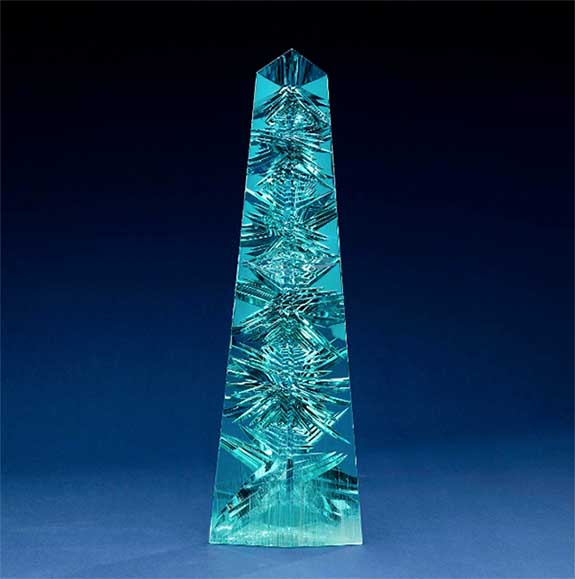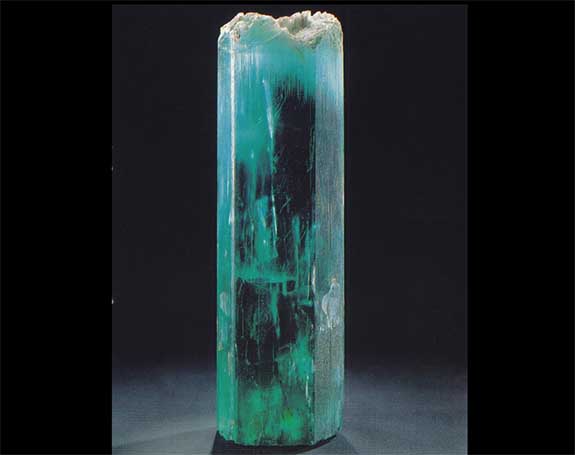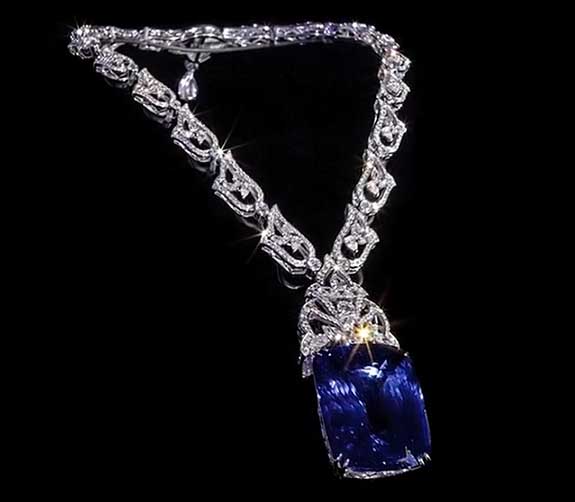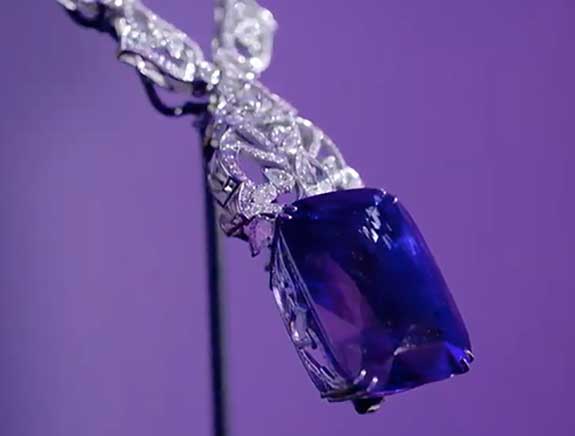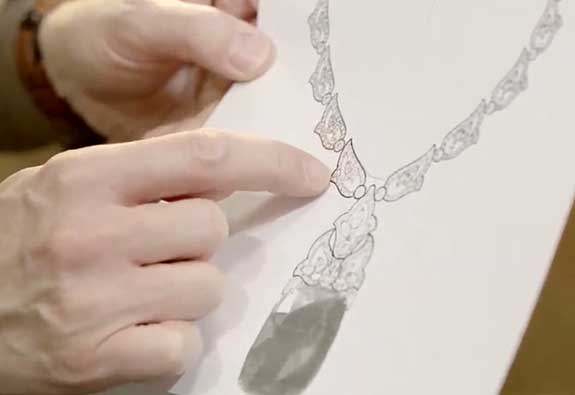Welcome to Music Friday when we bring you dreamy songs with jewelry, gemstones or precious metals in the title or lyrics. Today, American singer-songwriter Lana Del Rey takes us on a flyover of Miami and describes the scene as aquamarine in her 2015 love song, "Salvatore."
Del Rey's cinematic singing style is reminiscent of Frank Sinatra, and although the song takes place in contemporary Miami, the artist paints a picture of summer romance in an Old World town on the coast of southern Italy.
March's official birthstone makes a guest appearance in Del Rey's first verse...
She sings, "All the lights in Miami begin to gleam / Ruby, blue and green, neon too / Everything looks better from above, my king / Like aquamarine, oceans blue."
British singer Adele offered the song high praise in an interview with Vogue magazine, stating, "The chorus makes me feel like I'm flying..."
Del Rey told BBC Radio 1, "It's probably the track that's the most different from the other tracks on the record. It has a little bit of an Old World Italian feel. It's kind of a weirder song, but I love the chorus. It's filmic."
"Salvatore" appeared as the 10th track on Del Rey's fourth studio album, Honeymoon. Music critics loved the album and so did the record-buying public. Honeymoon charted in 31 countries, including a #2 spot on the U.S. Billboard 200 and a #3 spot on the Canadian Albums chart.
Born Elizabeth Woolridge Grant in New York City in 1985, Lana Del Rey's stage name is a nod to Lana Turner and the Ford Del Rey sedan. Although she was raised in Upstate New York, she moved back to Manhattan as a 20 year old to pursue a music career. Her preoccupation with glamour, melancholia and post-WWII pop culture placed the young artist in a genre all her own.
Del Rey told Artistdirect, "I wasn't even born in the '50s but I feel like I was there."
Her breakthrough came in 2011 after the viral success of her single "Video Games." Since then, she has produced two #1 albums and earned Grammy and Golden Globe nominations. Her official YouTube channel has netted more than 3.1 billion views. Eleven of her videos have topped 100 million views on Vevo.
Please check out the audio track of Del Rey singing "Salvatore." The lyrics are below if you'd like to sing along...
"Salvatore"
Written by Elizabeth Grant and Lana Del Rey. Performed by Lana Del Rey.
All the lights in Miami begin to gleam
Ruby, blue and green, neon too
Everything looks better from above, my king
Like aquamarine, oceans blue
Ah-ah-ah-ah
Ah-ah-ah-ah
Cacciatore
La-da-da-da-da
La-da-da-da-da
Limousines
Ah-ah-ah-ah
Ah-ah-ah-ah
Ciao amore
La-da-da-da-da
La-da-da-da-da
Soft ice cream
All the lights are sparkling for you it seems
On the downtown scenes, shady blue
Beatboxing and rapping in the summer rain
Like a boss, you sang jazz and blues
Ah-ah-ah-ah
Ah-ah-ah-ah
Cacciatore
La-da-da-da-da
La-da-da-da-da
Limousine
Ah-ah-ah-ah
Ah-ah-ah-ah
Ciao amore
La-da-da-da-da
La-da-da-da-da
Soft ice creams
The summer's wild
And I've been waiting for you all this time
I adore you, can't you see, you're meant for me?
Summer's hot but I've been cold without you
I was so wrong not to tell, Medellín, tangerine dreams
Catch me if you can, working on my tan, Salvatore
Dying by the hand of a foreign man happily
Calling out my name in the summer rain, ciao amore
Salvatore can wait
Now it's time to eat soft ice cream
Ah-ah-ah-ah
Ah-ah-ah-ah
Cacciatore
Ah-ah-ah-ah
Ah-ah-ah-ah
Limousines
La-da-da-da-da
La-da-da-da-da
Ciao amore
La-da-da-da-da
La-da-da-da-da
Soft ice cream
Credit: Image by Georges Biard [CC BY-SA 3.0], via Wikimedia Commons.

